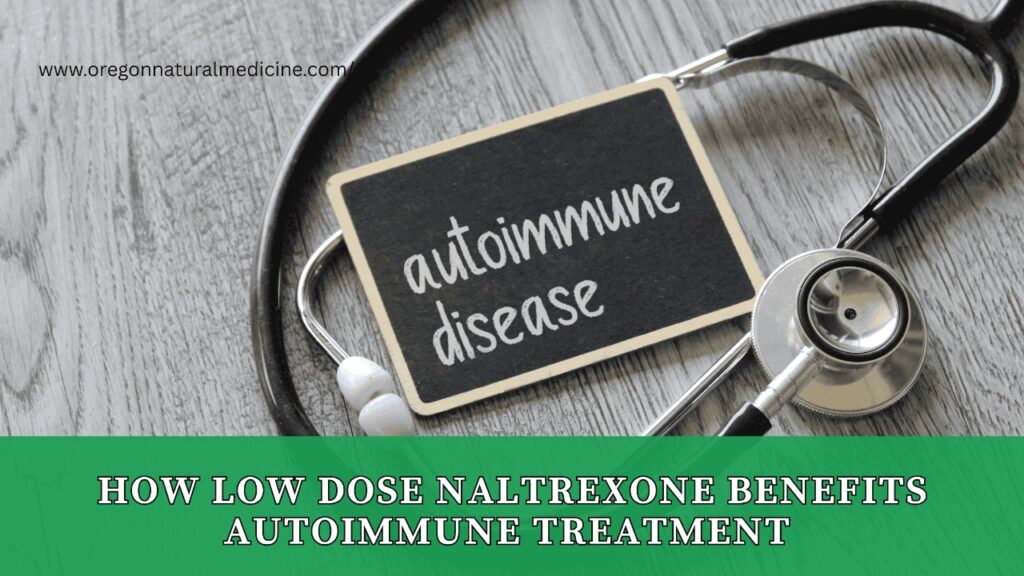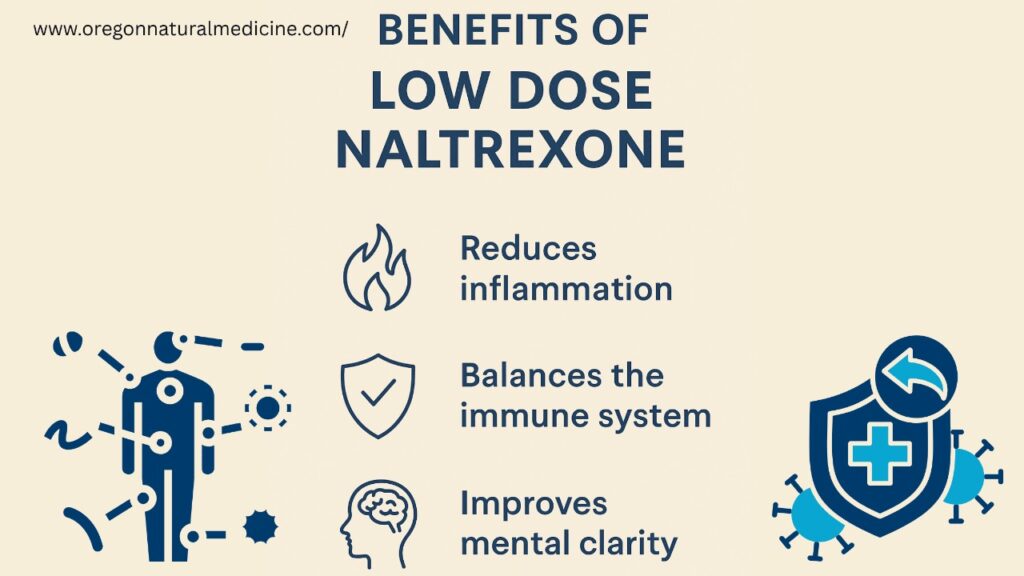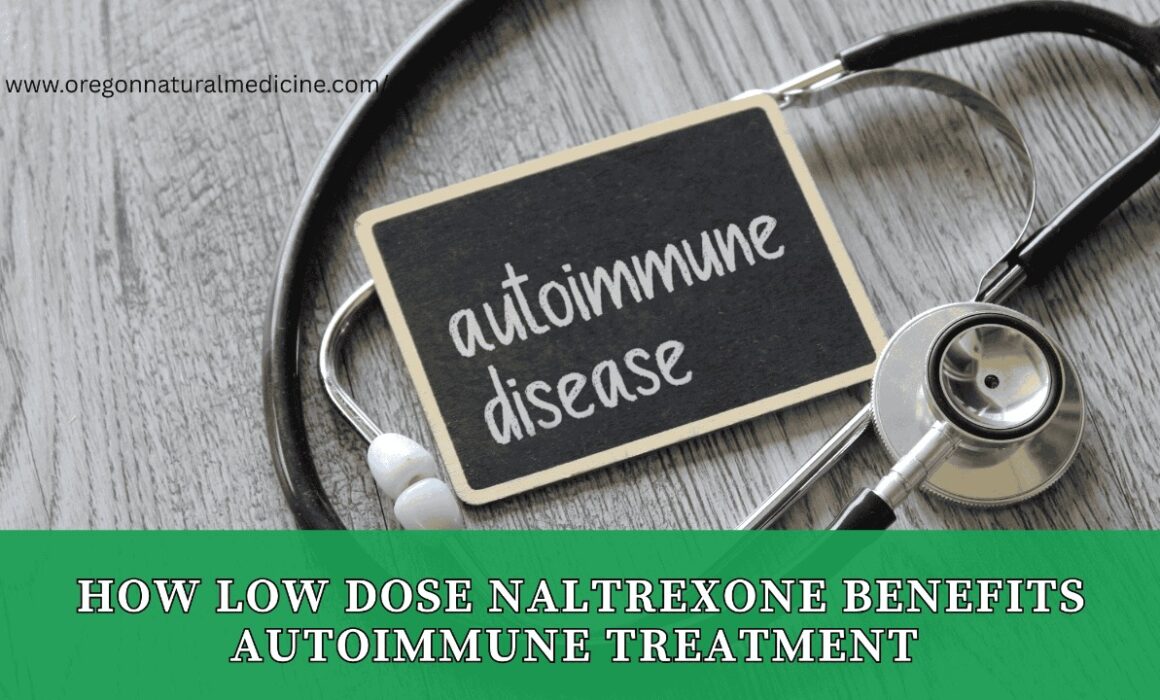How Low Dose Naltrexone Benefits Can Transform Your Autoimmune Treatment Plan

How Low Dose Naltrexone Benefits Can Transform Your Autoimmune Treatment Plan
Autoimmune disorders currently afflict more than 24 million Americans. These are conditions in which your immune system attacks your own body by mistake. To treat these issues, doctors mostly rely on conservative treatments, which usually just suppress the symptoms with steroids or immunosuppressants. But now more and more people are looking for a gentler, more focused solution: Low Dose Naltrexone (LDN).
Initially developed for addiction treatment, LDN has been found to do more than originally intended. When consumed in microdoses, it combines effectively with the body’s natural systems to help regulate the immune system, lower chronic inflammation, and restore immune balance.
There’s been a lot of buzz about LDN in the world of functional medicine. It’s affordable, tolerated, and it can support immune balance without harsh side effects. In this post, we’re going to take a close look at how Low Dose Naltrexone benefits to supercharge your immune system and why it might revolutionize your health.
What Is Low Dose Naltrexone (LDN)?
Low Dose Naltrexone (LDN) is a low dose (1.5mg-4.5mg) of a medication that was previously administered in higher quantities (50mg) to treat opioid addiction. But in low concentrations, it performs in an entirely different way.
This low dose has demonstrated exciting impacts on immune system modulation. Researchers and physicians learned that LDN for autoimmune diseases can reduce inflammation and bring the immune system into balance.
Difference Between Standard and Low-Dose Naltrexone
The standard approach is to block the opioid receptors to prevent people from getting high on drugs. In contrast, low-dose Naltrexone (LDN) only temporarily covers these receptors. This is a short-term block that stimulates an increase in endorphin production. These endogenous opioids facilitate the healing process in your body, decrease pain, and improve your mood.
Type | Dose | Used For |
Standard Naltrexone | 50mg+ | Opioid or alcohol addiction |
Low Dose Naltrexone | 1.5mg–4.5mg | Immune system regulation, chronic inflammation, autoimmune support |
How Does Low Dose Naltrexone Work in Autoimmunity?
LDN helps by calming an overactive immune system. In many autoimmune diseases, the immune system starts attacking the body’s own tissues. LDN supports the work of T regulatory cells (Treg cells), which are like peacekeepers. They help turn inflammation on or off when needed. This creates better immune tolerance and limits immune dysregulation.
LDN also improves the functionality of T regulatory cells / Treg cells. These cells keep your immune system balanced. When they malfunction, it results in immune dysregulation. It’s the root cause of autoimmune conditions like Hashimoto’s thyroiditis, lupus, and Graves’ disease.
LDN also stops the over-activation of microglia. These are immune cells in the brain that cause inflammation in the central nervous system, neurotoxicity, and symptoms such as fatigue or brain fog.
What Are the Immune-Modulating Benefits of LDN?
The greatest contribution of Low Dose Naltrexone is its effect on the immune system. LDN enhances endorphin production, which can assist in mood and also enhance T cell activity. This helps to decrease inflammatory markers (such as ESR) and helps with healing. For those who have inflammation in the central nervous system, LDN calms nerve pain and improves cognition.
LDN also decreases the need for steroids and other immunomodulating treatments that have harmful side effects. Relative to LDN vs immunosuppressants, LDN is lower risk and with the body rather than against it.

How Effective Is LDN in Treating Autoimmune Diseases?
Several studies support the use of LDN in autoimmune care:
- A 2013 Penn State College of Medicine study discovered that LDN helped to decrease symptoms of Crohn’s disease in 88% of patients.
- Another found improvement in fibromyalgia pain and mood with only 4.5mg/day.
- Several clinics throughout the United States have used LDN as treatment for MS, lupus, rheumatoid arthritis, and Hashimoto’s thyroiditis very successfully.
Although not a cure, Low Dose Naltrexone benefits result in fewer symptoms, increased energy and reduced dependency on heavy medications.
What Autoimmune Conditions Respond to LDN?
Low Dose Naltrexone (LDN) is gaining in popularity to help with autoimmune conditions. Its immunomodulatory and anti-inflammatory effects suggest its potential as a therapy for a wide range of chronic diseases against which conventional therapeutic approaches have failed.
Rheumatoid Arthritis: reducing pain and joint inflammation
Rheumatoid arthritis is a painful disease in which the immune system attacks the joints. LDN benefits by calming the immune overactivity and decreasing joint swelling, pain and morning stiffness. Patients frequently note increased mobility and decreased requirement for NSAIDs or biologic medications after starting LDN.
Multiple Sclerosis: improving quality of life
Multiple sclerosis causes damage to the central nervous system, resulting in disabling injury. LDN has been known to lessen fatigue, enhance mood, and possibly slow the progression of the disease. It is thought to act by regulating microglial cells in the brain that contribute to inflammation and neurological symptoms.
Crohn’s Disease: decreasing flare-ups and medication use
Crohn’s disease is characterized by chronic inflammation of the digestive tract. Research has shown that LDN is able to decrease the frequency of flare‐ups, abdominal pain, and the need for steroids. It also accelerates the healing process of the lining of the intestines, which enhances the quality of life for those suffering from this painful disease.
Lupus: modulating widespread inflammation
Lupus is a complex autoimmune disease that affects multiple organs. LDN helps to modulate the immune system and decrease general inflammation. Many patients with lupus have seen improvements in fatigue, joint pain, and skin rashes without the damaging side effects that come along with traditional medication.
Psoriasis: improving skin symptoms
Psoriasis results from an overactive immune response leading to red, scaly patches on the skin. LDN seems to modulate that response by addressing the underlying inflammation. Patients treated with LDN have noted decreased lesion size, less itching, and longer duration of clear skin than what might be achieved using topical treatments alone.
Additional promise: Hashimoto’s, fibromyalgia, chronic fatigue
LDN is becoming increasingly popular in the treatment of less well-studied, but frequently encountered conditions such as Hashimoto’s thyroiditis, fibromyalgia, and chronic fatigue syndrome. In Hashimoto’s, it might help lower thyroid antibodies. For fibromyalgia and CFS, it can also be an effective pain reducer, brain fog reducer, and can help increase energy by addressing the root causes of inflammation as well as supporting the nervous system.
What Is the Recommended Dosage and How Do You Access LDN?
The commonly employed titration schedule begins with 1 mg and increases in 0.5–1 mg increments every 2–3 weeks up to 4.5 mg. This gradual rise helps minimize the risk of LDN side effects such as vivid dreams or headaches.
LDN is considered a compounded medication because it’s tailor-made by a compounding pharmacy. Because it is not commercially available, patients in the U.S. must have a prescription from a licensed provider who is familiar with immune-modulating therapies.
Dose | Duration | Notes |
1 mg | Week 1 | Start low to avoid vivid dreams |
2 mg | Week 2-3 | Watch for thyroid improvement |
3–4.5 mg | Month 2–3 | Maintain based on response |
What Are the Side Effects of Low Dose Naltrexone?
LDN side effects in autoimmune patients are usually mild and short-term:
- Vivid dreams (as side effect)
- Trouble sleeping in the first week
- Mild headache
- Temporary digestive upset
These can often be reduced by lowering the dose or changing the timing.
How Does LDN Support Mental Health in Autoimmune Patients?
Chronic illness often leads to depression or anxiety. LDN increases natural opioids, improving mood, sleep, and motivation.
LDN may also help:
- Regulate the central nervous system
- Ease brain fog and mental fatigue
Support patients with autoimmune-related depression or central nervous system disorders
Is LDN Safe and Who Should Avoid It?
LDN is very safe for most patients. But it’s important to avoid it with opioid medications like morphine, tramadol, or Percocet.
People who should use caution:
- Those taking opioid pain medications
- Patients needing thyroid medication adjustment
Patients with thyroid hormone sensitivity may need a thyroid medication adjustment as their thyroid function improves. Anyone considering LDN should talk with their doctor, especially if they’re using narcotics or hormone replacement therapy.
Final Thoughts: Is LDN the Missing Piece in Autoimmune Care?
Low Dose Naltrexone benefits your body by reducing inflammation, balancing the immune system, and improving mental clarity.
When paired with:
- Autoimmune protocol diet
- Anti-inflammatory diet
- Dietary interventions (like fish oil / omega-3 fatty acids, vitamin D, A, zinc, selenium, iodine)
- Natural supplements for Treg cell support like glutathione, probiotics / soil-based organisms, butyrate / prebiotics
…it can significantly improve your autoimmune treatment results.
For those seeking non-opioid pain relief, immune healing, and personalized care, LDN is a powerful and natural option. At Oregon Natural Medicine, our expertise in immune-modulating therapies is led by Dr. John Reynolds, a seasoned naturopath with over 13 years of experience in treating autoimmune disorders through holistic, patient-focused care.
Ready to take the next step? Book a consultation with Dr. Reynolds today and discover how a custom LDN plan can help you heal from the inside out.
📚 References:
- Penn State College of Medicine: LDN and Crohn’s Study
- NIH: LDN Use in Fibromyalgia
- LDN Research Trust: https://www.ldnresearchtrust.org/
Disclaimer: This content serves informational purposes and is not a substitute for medical advice. Always reach out to a qualified healthcare provider for diagnosis and treatment.


